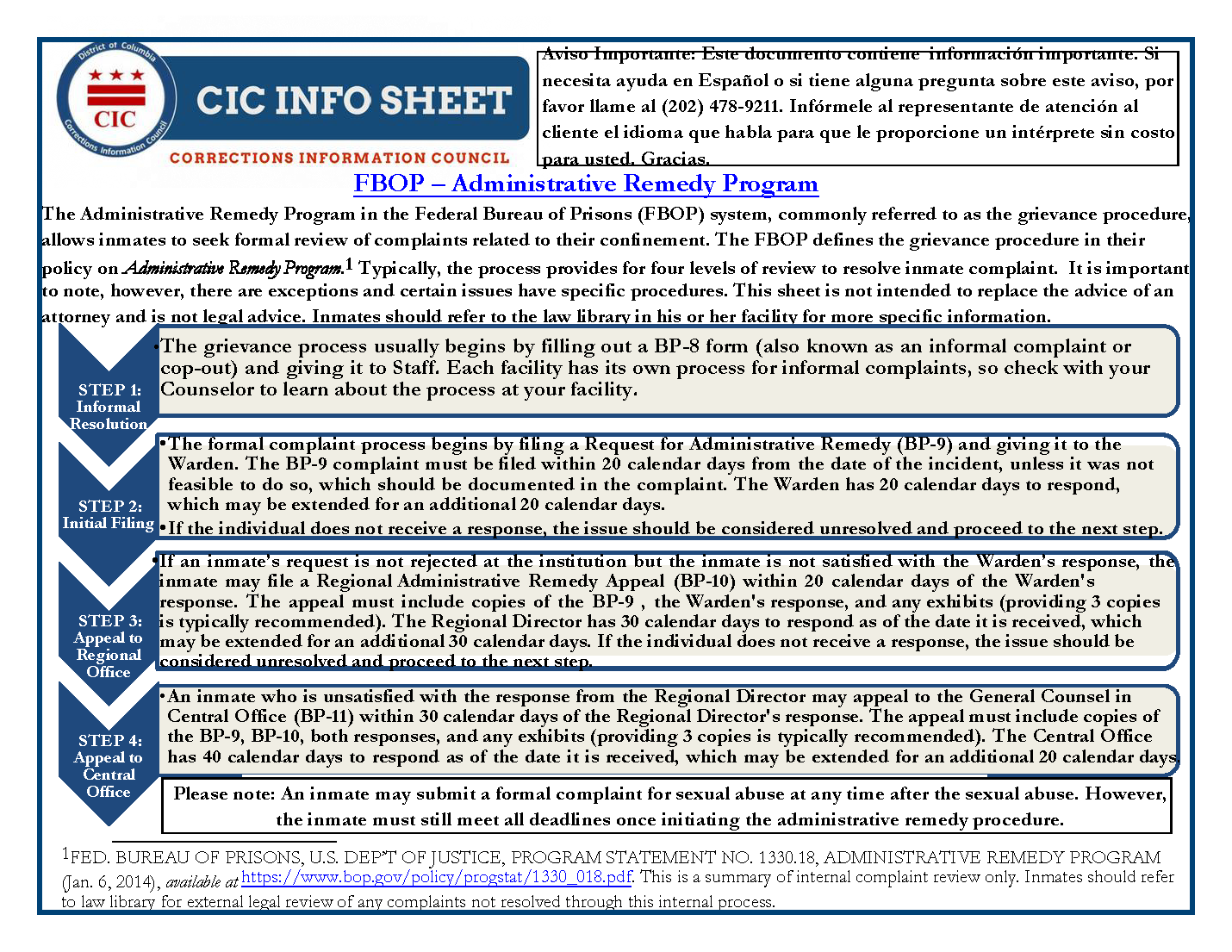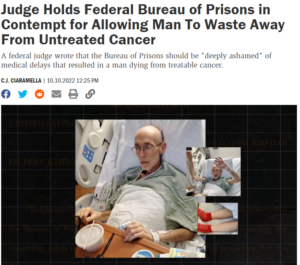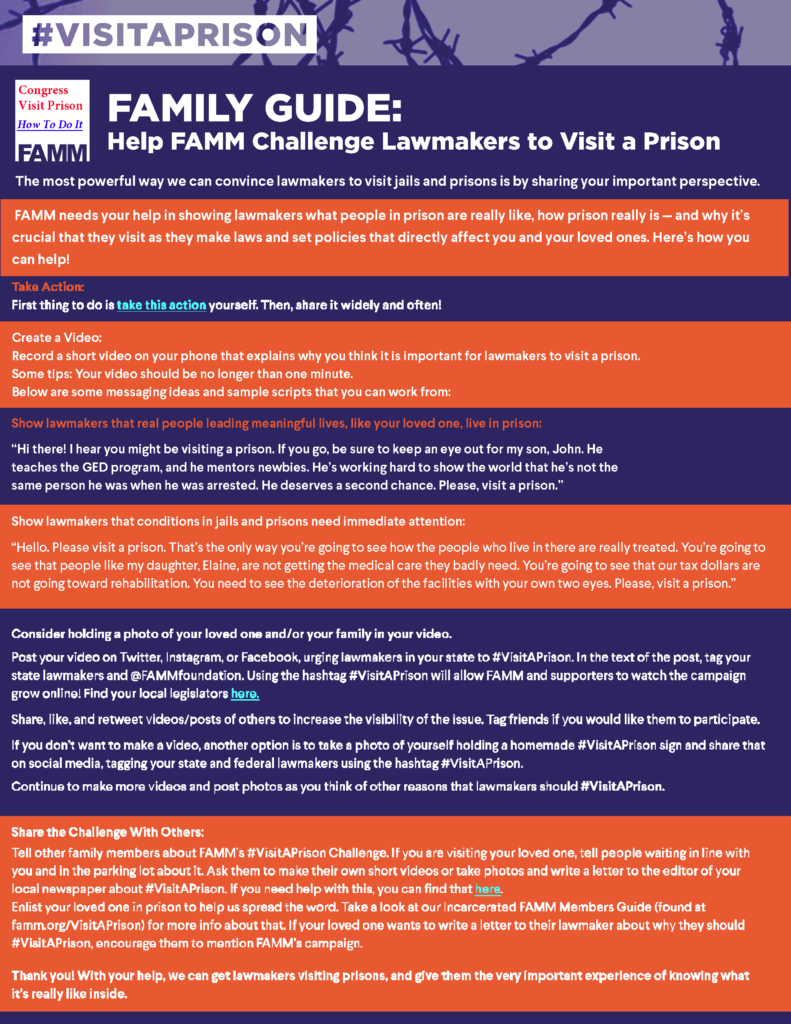THE WORK IS MORE THAN JUST GOING TO PROGRAMS; ✍ WE SHOW YOU HOW
PREPARATION. IS THE MOST IMPORTANT CONCEPT I WISH TO SHARE WITH THOSE FACING FEDERAL PRISON
Facing prison becomes real as your client finds themselves remanded or self-surrender. Being prepared for the possibility that they could be placed in an Isolation Cell on their first day is a preventable surprise that can be anticipated with a “heads-up” explanation before their arrival.
With Comprehensive Preparation for the Presentence Interview, defendants find themselves prepared for most eventualities. As part of their preparation, several days before their surrender date, they could have sent themselves books to read. Yes, these paperback books may start coming from Amazon (or home), and will remove some of the initial stress and boredom should they find themselves, right after surrendering, facing 23 hours per day in an isolation cell. This also sets up their habit of reading by showing their Case Manager that they are working to reduce their Improve Themselves, which positively impacts their Reentry Plan in the long run.
STAKEHOLDERS.
These are the persons responsible for incrementally reducing a person’s ‘Criminogenic Needs’ over time. This starts with the Judge, followed by Case Managers and Unit Teams (in prison), who determine everything a person does, from their job requirement to where one sleeps. Further, they are responsible for recommending programs as a result of their assessment survey, available through The First Step Act (FSA).
- FSA BENEFIT. This offers up to 365 days off a sentence, with the remaining Earned Time Credits (ETC) going to extra time in a Halfway House or possibly Home Confinement, which is still under BOP control.
- Other benefits include Good Time Credit, Second Chance Act (28 C.F.R. § 570.21(a)), Compassionate Release, and Cares (for a limited time).
THE PRESENTENCE REPORT (PSR).
All the while, the Presentence Report proves its reputation as ‘The Inmates Bible.’ This is because the first STAKEHOLDER your client will meet may be their Case Manager, who will have already read it in order to learn a little about the person they will soon meet.
If comprehensive, the Probation Officer who previously Interviewed your client will have weaved into Their Probation Report the NARRATIVE, REENTRY/ RELEASE PLAN, along with ANSWERS to the SPARC-13 ASSESSMENT QUESTIONS.
No Narrative in the Defendant’s Presentence Report?
- Then, all the STAKEHOLDERS will know about your client – will be what’s written in the DOJ INDICTMENT. I think we can all agree that this is not the most flattering way to make a great first impression on the Judge. Then, once incarcerated, the Case Manager, the Unit Team, and the Warden control when your client will be returned to freedom; now may be biased – just not in your client’s favor.
After your arrival and you’re all settled in, you’re now tasked with locating the computers, but not for emailing your loved ones. Rather, you need to take and complete your Risk Assessment Survey. This is because the First Step Act Programs you take will only count for Earned Time Credit (ETC) if 1) they have been recommended by BOP staff and 2) after you have completed your SPARC-13 Assessment Survey.
- To be prepared to take the Survey and speak with the Case Manager, you can also mail yourself a copy of the FSA Program Statement 5410.01_cn2 to review before meeting with your Case Manager several days before your arrival.
INCREMENTAL IMPROVEMENT – REDUCING CRIMINOGENIC NEEDS.
PATTERN. Your Pattern Risk Assessment Score is another assessment score and is hardcoded. Approximately 50% still applies at your 1st assessment, which occurs within 30 days after arriving. See where you fit.
As your attorney and Probation Officer will know this by the time of the Presentence Interview, it’s good for the defendant to become familiar with the categories and address the issues that need addressing.
I. WORK – THE FSA IS MORE THAN JUST GOING TO CLASSES
The only way I know of proving that you’ve,
- ...taken the classes,
- …demonstrated Incremental Improvements that your Case Managers need to see – (which I have learned from others),
- …is by daily writing (or documenting) everything constructive you do while in custody, which is by keeping a daily log or journal.
- WHY KEEP A DAILY LOG?
Consider this Insurance; similar to purchasing Life, Health, or Auto: You hope you don’t need it – Until you do.
- Next is Building this “New” Habit, practice – practice – practice. Then, repeating this skill daily until it becomes second nature. A great book on this: The Power of Habit, by Charles Duhigg.
Why? What do you do if the BOP has No Record that you took that class – on that date – and you find this out 6 Months Later, what do, or can you do?
- READ THIS, Great documentation-proof, ‘possibly,’ could have provided a more favorable outcome – Don’t Let This Be You: Legal Case: this person was denied their ETC (apparently without clear documented proof of ETC to support his position of 365, among other issues).
Ia. FIRST STEP ACT PROGRAMMING. Keep a running journal of everything Constructive that you are doing each day. This log will include the day, date, time, and your constructive activity – what you did and learned. Whether taking an FSA Class, reading a book that you could learn from, or other time well-spent activity, keep a record of what you learned and who taught that class (if this was FSA, include positive comments about the teacher). Then, at the end of the class, a brief note on lessons learned, how you will use them in daily life, and a brief thank you to your Case Manager for recommending that special program. This all goes towards building your Reentry/Release Plan.
If Your Case Manager, Counselor, and Warden, in their tenure, see hundreds to thousands of Adults In Custody (AIC, Director Peters’s new term) pass through their facility, how can you stand out in a good way? We all start off as a number – until we show them otherwise. If you’re looking to take advantage of the FSA and all it has to offer, no promises, but your efforts may result in an earlier release date.
Ib. NON-FICTION BOOKS – Remember What You Want, ‘TO GET HOME’ – start building this new habit. For as long as you will be in prison, pre-schedule books to be sent from Amazon (spread out among family and friends – on a schedule so that the responsibility and costs are spread out) to arrive every 2-3 weeks. Read daily and note the day, date, time, and specific “takeaways” that you have learned from each book by chapter, and watch your Release Plan continue to grow.
- You still want OUT of The BOP – Right? Give credit to your Case Manager for what you have learned in your ‘Release Plan’. Now, they, too, look great in the eyes of their supervisors.
The books can be on any topic, you have the time, and possibly this could develop into a new career. Biographies of famous people, Art, Art History, Science, Painting, Life Skills, History, Famous Women in History, Geology, really anything you are interested in. If you’re unsure, go to my website. the books are at the bottom of this page, or get ideas from The New York Times, Forbs, Inc., – but buy from Amazon as the BOP guards are familiar with Amazon (and paperbacks are cheaper).
- This is just an idea, a starting point – you may have an interest in Painting or Drawing, whatever it is, take this time and explore it; please don’t waste it on just TV. This is Temporary, and Eventually, you will be Released.
- This is advice that I have learned from others who have developed a broader perspective. My wish for you continues to be PREPARATION.
Ic) You’re Educated With a Degree and Experience, Great – Create a Course
- Plan a curriculum on a topic that you feel would be interesting.
- Organize it for classes to meet 2-3 times per week for several months,
- Then, run the idea by your case manager; maybe it could help those with their GED; who knows?
- Once all parties agree, your case manager is happy, and your Reentry Plan grows – GREAT!
- Let your Case Manager and Unit Team take the credit!
- It’s just one more thing Working For You.
Id. Log every conversation you have with each BOP staff member by name, date, time, and topic; it’s for “just in case.” It can be an innocent conversation, but you will never know – until the day you need it, but if you forgot the day, date, and exact conversation – you’re out of luck.
Ie. Second Chance Pell Education Grant. Do you have your GED? Yes, Great! Do you have a College Education? The Department of Education intends to fully implement the legislative changes to allow eligible students’ college-in-prison programs to access Federal Pell Grants, beginning July 1, 2023. The Biden-Harris Administration has the following list of participating Colleges and Universities. Please check for Grant eligibility first.
II. THE FINANCIAL RESPONSIBILITY PROGRAM (FRP). Should you have a court-ordered financial penalty to participate in the First Step Act, you must offer to participate in the Program; otherwise, you could be denied participation in FSA programs and/or early release benefits. If the Judge ordered that you could delay payments (Yes, still offer something to your Case Manager. It will help you in the long run.). If the Judge ordered, for example, $25 per quarter, to offer something more to your Case Manager will elicit a similar response.
Recommendations:
- Do not keep $1000s in your Commissary Account. Why? Because the DOJ one day would like nothing better than confiscating 75% of your commissary money.
- Offer reasonable payment options. If your commissary account takes in > $1000s per Month, offer to contribute $200 per Month to your FRP; if your account takes in $200-500 per Month, offer to contribute $25-75 per Month (or quarter, depending on your ability to pay), to your FRP.
- Refusing is not an option – unless you wish to serve your full sentence and possibly risk the DOJ getting their wish of confiscating 75% of everything in your commissary account.
RELEASE PLAN, INTERVIEW.
- No Reentry/Release Plan 👉 Why should a Case Manager recommend you for the Second Chance Act? If you don’t appear to care about your future – which is how they will view it, why should your STAKEHOLDERS spend their extra time on you?
- No Reentry/Release Plan 👉 Why should a Case Manager recommend you to a Residential Reentry Manager (RRM)?
- No Reentry/Release Plan 👉 Why, should a Residential Reentry Manager (RRM) take a chance and offer you one of their beds when there is someone else applying with a Great Release Plan? If someone has taken the time to 1)write a Release/Reentry Plan that has reviewed their progress during their time in prison, 2)explain why they need and how they will use the time while filling one of the limited Halfway House beds, or while on Home Confinement, who would you choose?
- Case Manager recommendations are important to Residential Reentry Managers (RRM), as they need to know that they’re bringing in a qualified person who can continue their reentry successfully back into the community.
REENTRY/RELEASE PLAN. Starting it before your Presentence Interview isn’t easy, so explain that you researched content for your Release Plan Online at the MN Dept. of Corrections and ‘The National Institute of Corrections Manual’, and then use their template to start your Reentry Plan Into The Community. Print it, and mail it to yourself so you have a baseline.
- NEXT INTROSPECTION: Review your investigation, criminal charge, plea hearing, trial or guilty plea, presentence investigation, and sentencing process. You can start just by writing, “I’ve had a lot of time to think, and I didn’t realize how bad my decisions were and how much pain they inflicted on the victims I created as a result of my actions…” I your words…
- With preparation and more entries, you will see that a better outcome will emerge as you continue developing your reentry/release plan. We can’t change the past — but you can impact your future.
- It’s early in the process, so that you won’t have all the answers now, but you could add that you reviewed the Risk Assessment Programs available through the First Step Act, and you recognize that there is much for you to learn – because you have much to prove this to your victims, community, family, and yourself.
This article also appeared on LinkedIn




 write to your Warden directly—as you have been told that BOP Wardens pay attention to these emails. Have the Warden’s Name, Phone number, Email, and Address ready, and be specific about what help you need your representative to ask for or inquire about.
write to your Warden directly—as you have been told that BOP Wardens pay attention to these emails. Have the Warden’s Name, Phone number, Email, and Address ready, and be specific about what help you need your representative to ask for or inquire about.






